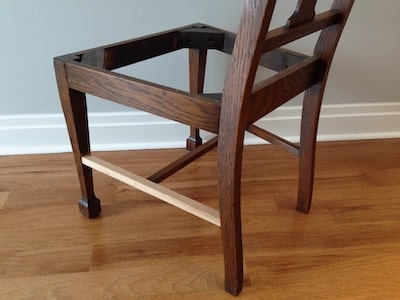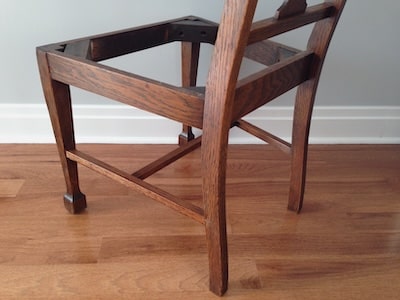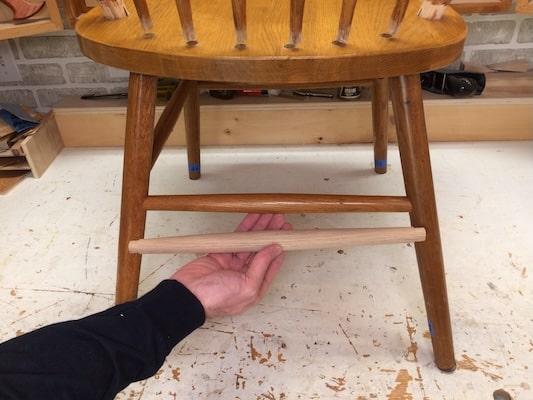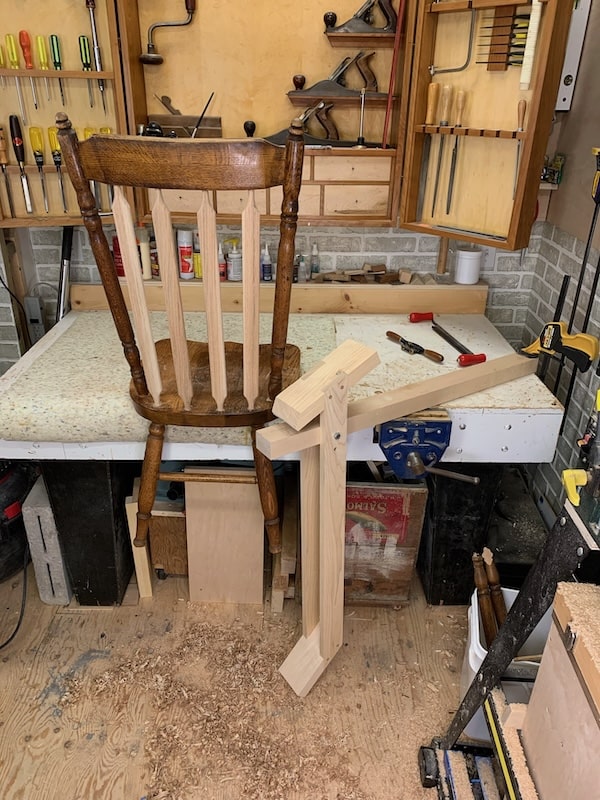Remaking Broken or Missing Furniture Parts
Nov 17, 2025
In our workshop, we regularly repair wooden furniture with broken or missing parts. There are a variety of skills needed to remake furniture parts, and they depend on how the furniture was made. There are three main types furniture construction:
- Flat Work Furniture
- Turned Wood Furniture
- Chair Making
The woodworking skills required to remake these parts vary, but the process used in each have a few things in common. First of all, it's important when replacing furniture parts, the same wood species is used. This ensures there's similar grain patterns and wood colour so the finishing process will allow successful matching to disguise the new part. Here's an example of an oak chair stretcher that was replaced and stained. The grain and colour are the same as the rest of the chair.
All new parts need to be sanded and prepped for stain and finish. The finishing process is also the same for all replacement parts, which I finish after the repaired furniture is assembled.
A common skill for remaking furniture parts is problem solving skills. For example, if a piece broke, why did it break? Was there a fault in the wood? Was the furniture abused? Was the part made incorrectly? Determining the cause of the problem is important so the new furniture part will not break in the future.
Let's look at the types furniture construction, and how the replacement parts are made.
Flat Work Furniture Parts
"Flat work" refers to woodworking that is done using flat boards. This is typical for cabinets, desks, tables, and some styes of chairs. The machines used are typically a jointer, planer, table saw, miter saw, router, drill press, etc. The joinery (how two pieces of wood are joined) could be done with dowels, mortise and tenon, etc. Due to the popularity of the tools used for this type of woodworking, flat work furniture repairs are easier for the average woodworker to complete compared to the other categories of furniture.

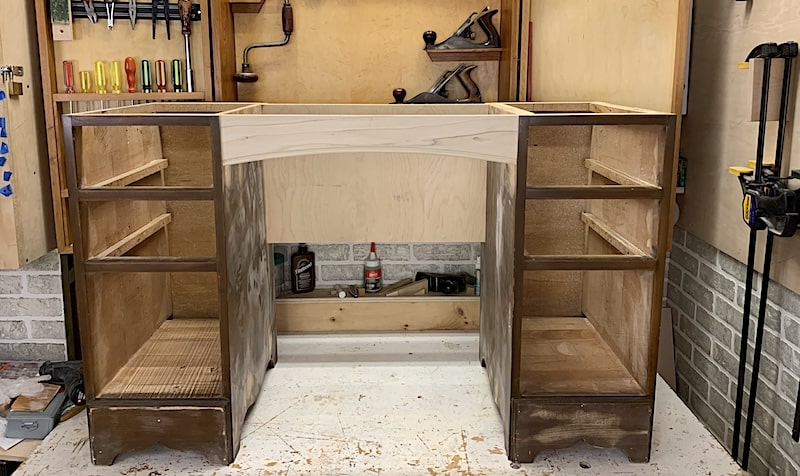
Here's a video showing how to remake a square chair stretcher using flat work skills:
Wood Turning Furniture Parts
These types of furniture parts are made using a lathe. They are referred to as "turned" furniture parts and are most commonly used in chairs, however turned parts are used in tables, desks, and for decorative elements to embellish cabinets.
Turning furniture parts requires a unique set of tools. The main tool is a lathe, where the wood spins at high speed and a chisel or scraper is brought to the wood to shape it. There are other unique tools and supplies used such as callipers, face plates, dust collectors, specialize sandpaper, etc. Wood turning is a wonderful craft to learn and it can be rewarding because you can quickly see results once you're comfortable with the key techniques. Here are some examples of turned furniture parts:
Chair Making Furniture Parts
While some parts may appear like they could be turned with a lathe, very thin parts cannot be turned on a lathe. For example, the narrow spindles on a Windsor chair can only be made by hand. Chairmakers use some specialized tools to make these parts including a draw knife, spokeshave, and a shave horse. With this set of tools, it's possible make unique parts that can't be made with machines. For example, these chair back slats have a sightly curved surface to them and the ends taper to round tenons that fit in the chair.
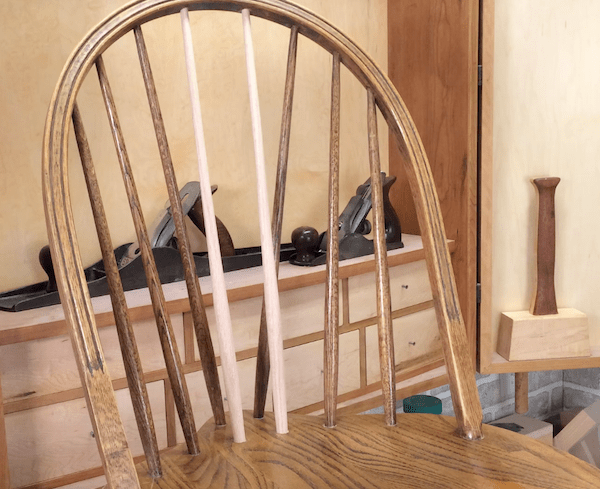
Understanding how a piece of furniture is made is important for deciding how to reproduce furniture parts. These skills can be built over time, along with acquiring the necessary tools. If you're interested in learning how to repair furniture, take a look at our furniture repair courses and our Fixing Furniture Community resources.
Author: Scott Bennett, Co-owner, Wooden It Be Nice - Furniture Repair
Stay connected with news and updates!
Join our mailing list to receive the latest news and updates from Fixing Furniture.

